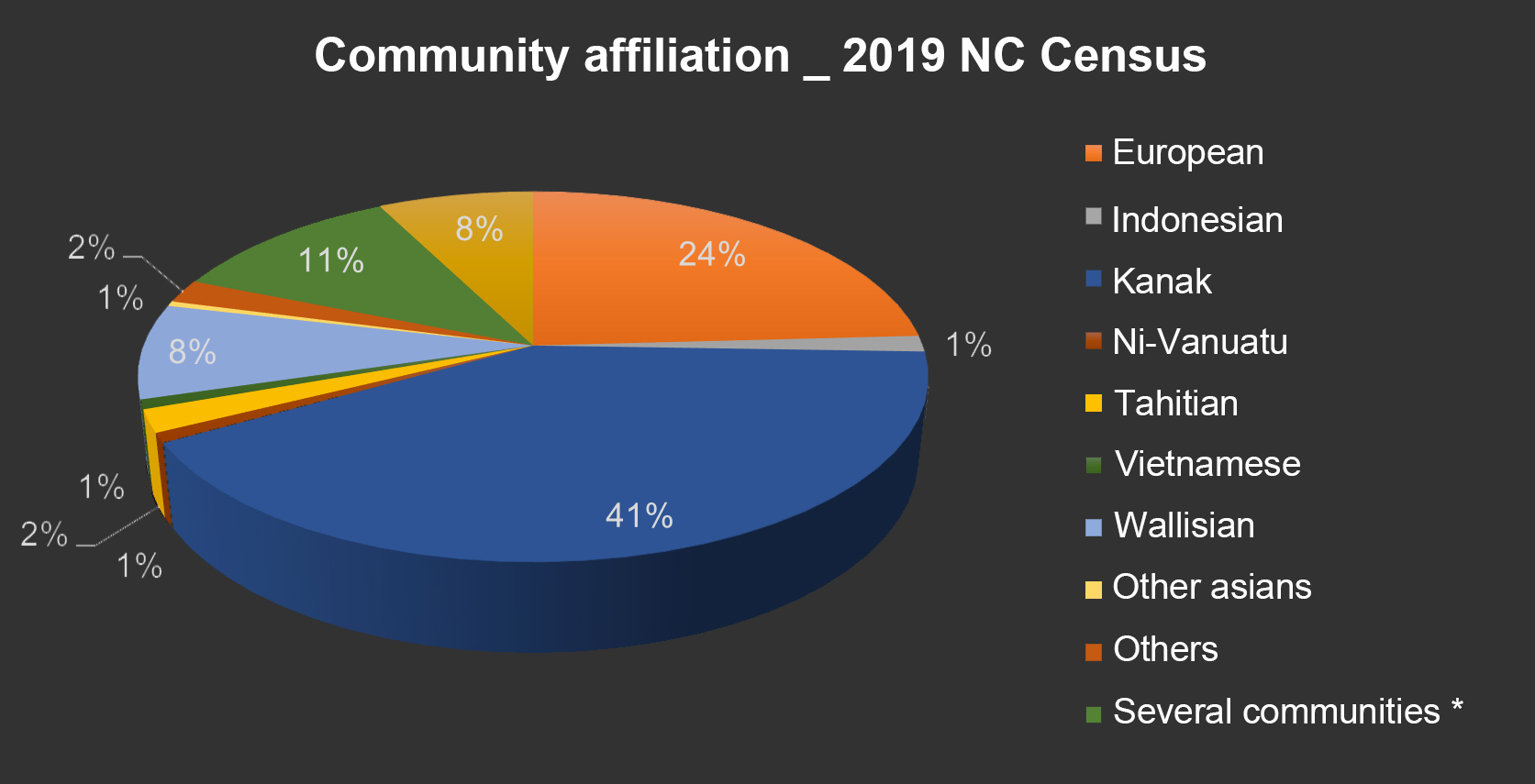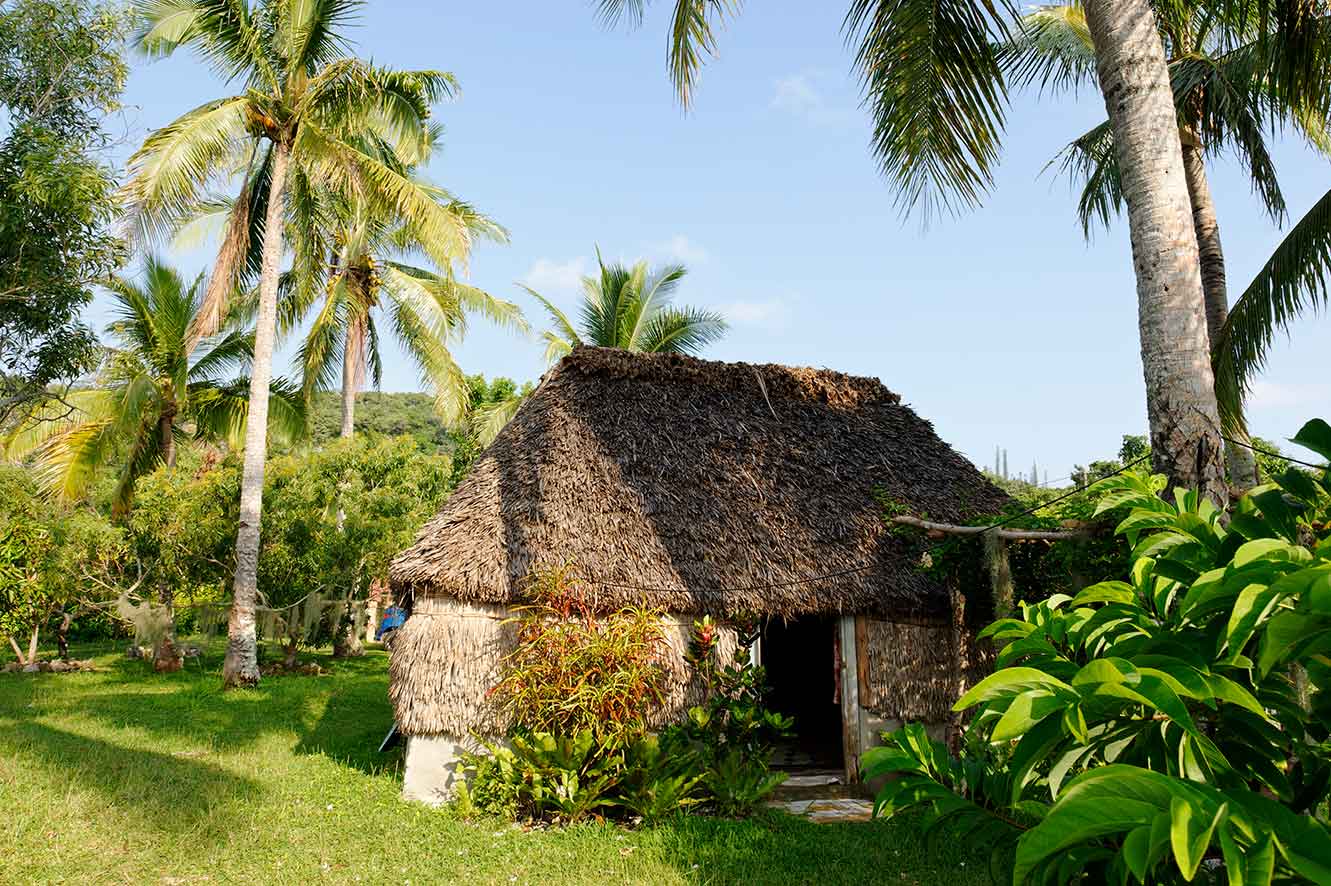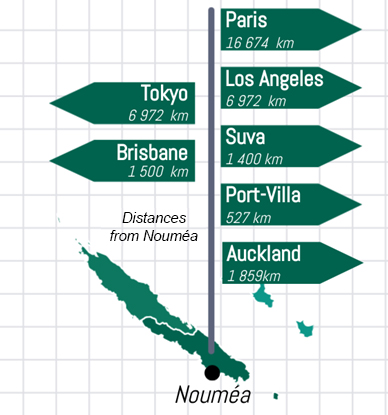Geographically located in the Pacific Ocean, New Caledonia belongs to the Melanesia Group, as opposed to the Polynesia and Micronesia Groups.
New Caledonia covers an area of 18,575 square kilometres, making it the 3rd largest country after Papua New Guinea and New Zealand.
New Caledonia is a major geostrategic asset for mainland France since it has one of the largest EEZs of France’s archipelagic island territories, an area of 1,240,000 square kilometers, or half of the Mediterranean Sea.
The New Caledonian archipelago includes many islands, but the main ones are:
Grande-Terre is the largest island with an area of approximately 16,400 square kilometers, or about twice the size of Corsica. It is also the most populated with nearly 253,054 inhabitants. The capital is Noumea.
The Loyalty Islands located approximately 100 km east of Grande-Terre: with 4 islands: Tiga, Maré, Lifou and Ouvéa, a total area of 1,981 square kilometers and 18,353 inhabitants.
South of Grande-Terre or of the Main Land, the Isle of Pines with 152 square kilometres and approximately 2,037 inhabitants and the Bélep Islands located approximately 50 kilometres Northwest of the Main Land with 70 square kilometres and approximately 867 inhabitants.
New Caledonia is particularly isolated from the major European, American and Asian metropolises. However, it is ideally located in relation to Australia, New Zealand or its Pacific neighbours.
Population: 271,407 at the 2019 census, 75% of whom are in the Southern Province and 67% in the Grand Sud (made up of the municipalities of Païta, Dumbéa, Mont-Dore and Nouméa). The Northern Province has 50,000 inhabitants and the Islands Province has just over 18,000.
Ethnic groups: In New Caledonia, the first Kanak people represent a significant portion of the population. However, history has shaped a population that is now largely mixed.



Parity: The ratio between men and women in New Caledonia is close to balance with a ratio of 1 to 1 (180 fewer women than men).
Languages: French. There are also 29 so-called vernacular languages, which correspond to the languages used by the first people. They are part of the Austronesian linguistic area and are therefore neighbours of those of Taiwan, the Philippines, Indonesia and Madagascar.
Nationality: French.
Citizenship: French or Caledonian (Caledonian citizenship is explained further in the “special status” section).
Density: 14.5 inhabitants per km2. However, there are significant differences in density between the Great South and the rest of the territory (see population data).
Administrative division: Territory, Southern Province, Northern Province and Islands Province, Communes. Tribes are assigned to town councils.
GDP/inhabitant (Gross domestic product per inhabitant): 3,764,000 XPF in 2022 (Ranked at the same level as New Zealand and Australia).
HDI (Human Development Index): 0.79/1 _ High human development (access to education, health, water, etc.)
High development: ≤ 0.8; Average development: ≤ 0.5 < 0.8; Low human development: < 0.5
Currency: Francs Pacific XPF, at fixed parity with the euro. 100 (~119.33) XPF = 1 Euro.